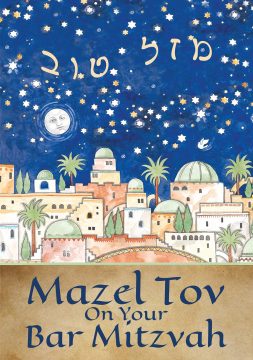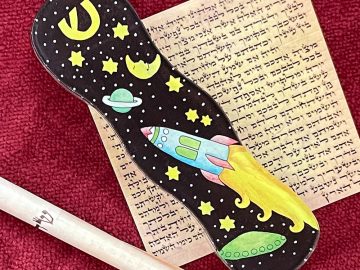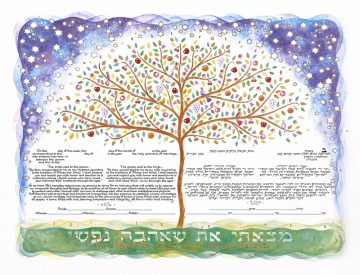BASHERT – באַשערט
 FROM EVERY HUMAN BEING THERE RISES A LIGHT THAT REACHES STRAIGHT TO HEAVEN. AND WHEN TWO SOULS ARE DESTINED FOR EACH OTHER, AND FIND EACH OTHER, THEIR STREAMS OF LIGHT FLOW TOGETHER AND A SINGLE BRIGHTER LIGHT GOES FORTH FROM THEIR UNITED BEING
FROM EVERY HUMAN BEING THERE RISES A LIGHT THAT REACHES STRAIGHT TO HEAVEN. AND WHEN TWO SOULS ARE DESTINED FOR EACH OTHER, AND FIND EACH OTHER, THEIR STREAMS OF LIGHT FLOW TOGETHER AND A SINGLE BRIGHTER LIGHT GOES FORTH FROM THEIR UNITED BEING
This wonderful quote is attributed to the Baal Shem Tov (1698-1760), the founder of the Chassidic movement. Rabbi Israel ben Eliezer was born in the Ukraine. His parents died when he was a young child and he was raised and educated by the community. He lived a simple life, but studied and learned with other children. According to tradition, he showed great promise and developed a special relationship with other tzadikim (צדיקים – righteous ones) and a personal, emotional tie to God expressed through song and direct prayer to God. He mastered the mysteries of Kabbala (קבלה – Jewish mysticism) at an early age and then at age 36 revealed himself to the world and became known as the Baal Shem Tov (הבעל שם טוב – Master of the Good Name).
He began promulgating his own wisdom (based on the Kabbalistic teachings of Rabbi Isaac Luria), which emphasized any individual’s ability to reach their own spiritual potential through prayer, the love of God, and the love of one’s fellow Jews. This was as opposed to the traditional way to reach God – Torah study. It is this accessibility to God and the special relationship to one’s own Rebbe that continues to be the foundation of the Chassidic movement founded by the Baal Shem Tov.
Among his quotes, is this wonderful one that truly illuminates the meaning of the Yiddish word, Bashert, meaning destiny, a person’s soulmate. You can also view this wonderful Jewish Framed Art Print by Mickie at Amazon
#mickiecaspi #caspicardsandart #lovers #loversgift #valentinesday #love #ketubah #artist #art #judaica #judaicaartist #iloveyou #happyvalentinesday #Iammybeloveds #mybeloved #originalpainting #watercolor #bashert #baalshemtov #meantforeachother #soulmate #soulmates #loveislove #loveandlight




I’d like to read more about origins of your art style and Judaica. Thanks!
I created my first Ketubah when I got married. I was 18 years old and in art school. I was working at the Jewish Teacher Center as the Artist-in-Residence in Wilmette, IL. All the women who worked there were very excited about my upcoming marriage and they asked if I was going to create my own Ketubah. I had never heard of a Ketubah before and when they showed me a book of antique Ketubot, I fell in love with them and was sure that I could make one myself. I did quite a lot of research on Ketubot. I already knew calligraphy and Hebrew, so I did indeed make my own Ketubah. People were very impressed with it and at the wedding itself, I got commissions – and long story short, I have been making Ketubot ever since.
In terms of designing ketubot, many different things inspired me. I love many forms of art – especially very detailed small things. I like looking at something very closely and seeing exquisite workmanship. At the same time, I try to have the overall piece well designed as a whole with pleasing colors and patterns. When I begin the process, I often just see the final image in my mind – or at least I have a general idea of what it should look like. Then I dive right in and begin to work. As it emerges, I fill in the blanks that I hadn’t foreseen. I find that if I think too hard about something without starting, I become bogged down and start to procrastinate and then become afraid to begin. Sometimes I become stuck and can’t figure out how to proceed, at which point I can scan a piece and use Photoshop to experiment. Before the computer, I did all the experimenting by hand which would take a really long time.